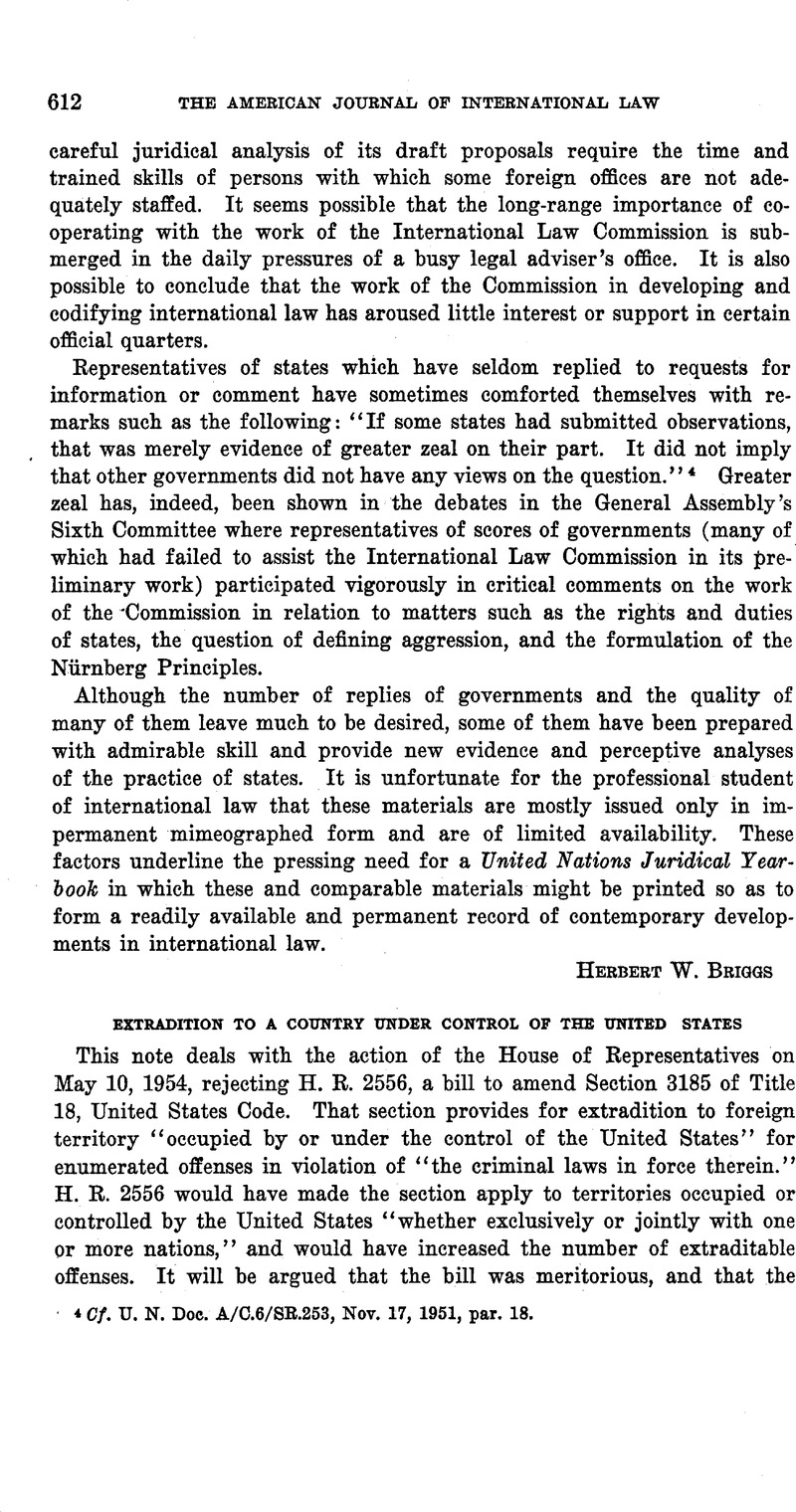No CrossRef data available.
Published online by Cambridge University Press: 30 March 2017

1 C. 793, 31 Stat. 656. The bill, H.B. 11719, 56th Cong., 1st Sess., was introduced on May 19, 1900. There was lively debate; see esp. 33 Cong. Eec. 5912 et seq. and 6452 et seq. The committee reports are H.R. Rep. No. 1652 and S. Rep. No. 1515.
2 Neely v. Henkel (No. 1), 180 U. S. 109 (1901); see In re Neely, 103 Fed. 626, and 103 Ted. 631 (1900).
3 Letter of July 3, 1953. H.R. Rep. No. 1416, 83d Cong., 2d Sess. 9 (1954).
4 Reported by the Committee on March 25, 1954, H.R. Rep. No. 1416, 83d Cong., 2d Sess.
5 100 Cong. Rec. 5949–5966 (May 10, 1954).
6 100 Cong. Rec. 5965 (May 10, 1954).
7 Art. 3(a) of the Uniform Code of Military Justice (Act of May 5, 1950; 64 Stat. 108, 109, 50 U.S.C., Sec. 553(a)) provides: “Subject to the provisions of article 43 [statute of limitations], any person charged with having committed, while in a status in which he was subject to this code, an offense against this code, punishable by confinement of five years or more and for which the person cannot be tried in the courts of the United States or any State or Territory thereof or of the District of Columbia, shall not be relieved from amenability to trial by courts-martial by reason of the termination of said status.”
As to what offenses are punishable by confinement of five years or more, see the Table of Maximum Punishments, Manual for Courts-Martial, United States, 1951, at p. 219 et seq. The reach of Art. 3(a), as to offenses for which military jurisdiction is preserved, is broader than the categories of extraditable offenses in H.R. 2556.
“Jurisdiction under Article 3 a should not be exercised without the consent of the Secretary of the Department concerned.” Par. 11(b) of the Manual for Courts-Martial, 1951. As to the Army, this is implemented by rigorous requirements. Manual for Courts-Martial, 1951, United States Army Cumulative Pocket Part, 31 May 1951, p. 10.
8 One may recall the case of ex-Lieutenant Icardi and ex-Sergeant LoDolce, accused of the murder of Major Holohan in Italy in 1944: they had been separated from the service prior to the enactment of the Uniform Code. Extradition to Italy for trial in the Italian court, under the Extradition Treaty of 1868, was denied on the ground that the demanding government had not been in control of the place at the time the crime was committed. In re LoDolce, 106 F. Supp. 455 (1952); this Joubnai, Vol. 47 (1953), p. 150.
9 Law Week 2449 (March 25, 1954).
10 The House Judiciary Committee, in reporting the bill that became the Act of June 6, 1900, said: “This does not offend against the constitutional provision against the enactment of ex post facto laws. The bill relates to procedure only, and does not make that a crime which was not a crime before its enactment or change the penalty to be inflicted in case the guilt is established.” H. Rep. No. 1652, 56th Cong., 1st Sess. 2 (1900).
11 One may cite, for example, the dissenting opinion of Mr. Justice Black in Madsen v. Kinsella, 343 V. S. 341, 371 (1952).